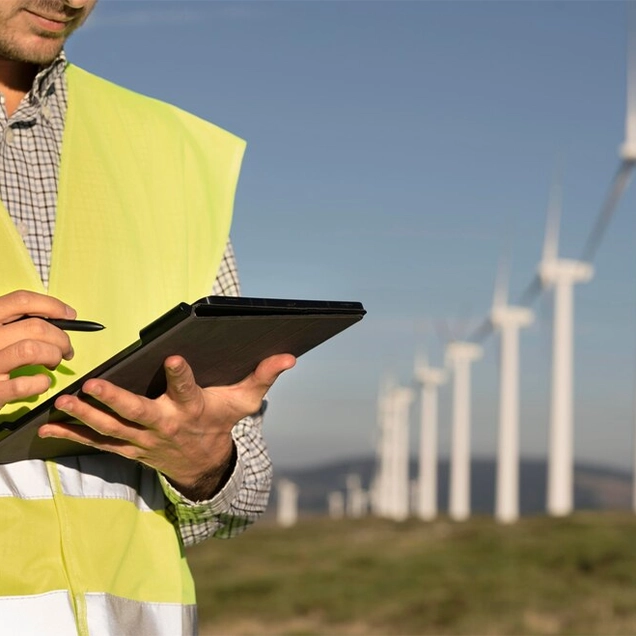Renewable energy asset management plays a critical role in ensuring that clean energy systems operate efficiently and deliver consistent performance over time. It involves the coordination of technical, financial, and administrative tasks related to assets like wind farms, solar arrays, and hydroelectric stations. By monitoring performance data, managing maintenance schedules, and analyzing energy output, asset managers help maximize returns while minimizing downtime and operational risks.
Renewable energy asset management also encompasses compliance with environmental regulations, insurance oversight, and stakeholder reporting. As renewable projects scale up globally, the need for smart asset management solutions becomes even more important. Digital platforms now enable real-time tracking and predictive maintenance, empowering operators to make data-driven decisions that enhance system reliability and financial sustainability. In addition to technical monitoring, asset managers are also responsible for ensuring contractual obligations are met, such as power purchase agreements (PPAs) and grid interconnection terms.
Enterprise Asset Management for Renewable Energy
Enterprise Asset Management (EAM) for renewable energy refers to the systematic approach used to manage the physical assets of large-scale energy companies throughout their lifecycle. From wind turbines and solar panels to substations and inverters, EAM solutions help organizations optimize asset performance, reduce operational costs, and improve decision-making through integrated data and analytics.
In the renewable energy sector, assets are often spread across vast geographical areas, which makes centralized and real-time management essential. EAM systems provide tools for tracking maintenance schedules, spare parts inventories, inspection histories, and compliance documentation, all in one platform. This level of control helps extend asset lifespans and ensures safer, more reliable energy generation.
Some key features of enterprise asset management in the renewable energy sector include:
- Predictive maintenance and condition monitoring
- Centralized asset tracking and reporting
- Lifecycle cost analysis and budgeting tools
- Integration with SCADA and IoT systems
- Compliance management and documentation
Additionally, enterprise-level asset management facilitates collaboration between technical teams, financial departments, and compliance officers. With features like automated workflows and real-time data visualization, EAM helps renewable energy providers transition from reactive management to a more strategic, proactive model that maximizes both performance and return on investment.

Renewable Energy Asset Management Solutions
Renewable energy asset management solutions are specialized tools and services designed to monitor, maintain, and optimize clean energy infrastructure. These solutions include software platforms, digital sensors, and analytical frameworks that enable operators to track key metrics such as energy output, equipment health, and weather conditions. Their main objective is to enhance operational efficiency, minimize downtime, and ensure long-term financial viability.
Modern asset management platforms often use cloud-based dashboards and AI-driven analytics to deliver real-time insights into system performance. These technologies allow operators to detect performance anomalies early, schedule preventive maintenance, and forecast energy production based on weather and historical data. This helps reduce unplanned outages and improves energy reliability.
Moreover, tailored asset management solutions support regulatory compliance, sustainability reporting, and portfolio benchmarking—especially useful for companies managing multiple renewable projects across regions. By consolidating all operational and financial data into a single system, these solutions not only increase transparency but also empower stakeholders to make informed, future-oriented decisions.
Frequently Asked Questions (FAQ)
Asset management in renewables refers to the systematic process of monitoring, maintaining, and optimizing renewable energy assets like wind turbines, solar farms, and energy storage systems. It involves both technical and financial oversight to ensure the long-term efficiency, safety, and profitability of these clean energy investments.
Assets in renewable energy include both physical and digital components that contribute to energy generation and distribution. Key assets include:
- Solar panels and inverters
- Wind turbines and blades
- Battery storage systems
- Transformers and grid connection infrastructure
- Monitoring software and control systems
Energy asset management is the practice of managing all the resources and systems involved in energy production and distribution—both renewable and non-renewable. It includes tasks such as performance monitoring, maintenance scheduling, financial analysis, and risk management, with the goal of maximizing energy output and minimizing operational costs.
The 5 P’s of asset management often refer to the key focus areas needed for effective asset strategy:
- People – skilled personnel to manage and maintain assets
- Processes – standardized workflows and procedures
- Performance – continuous tracking and optimization
- Planning – long-term lifecycle and investment planning
- Profitability – ensuring a return on asset investment
Asset management in a power plant involves the coordinated control of all systems, equipment, and infrastructure to ensure optimal performance, safety, and reliability. In renewable power plants, like solar or wind facilities, this includes everything from daily monitoring and maintenance to performance reporting and compliance with regulations. The goal is to maximize uptime, energy yield, and financial returns throughout the asset’s operational life.Formun ÜstüFormun Altı



